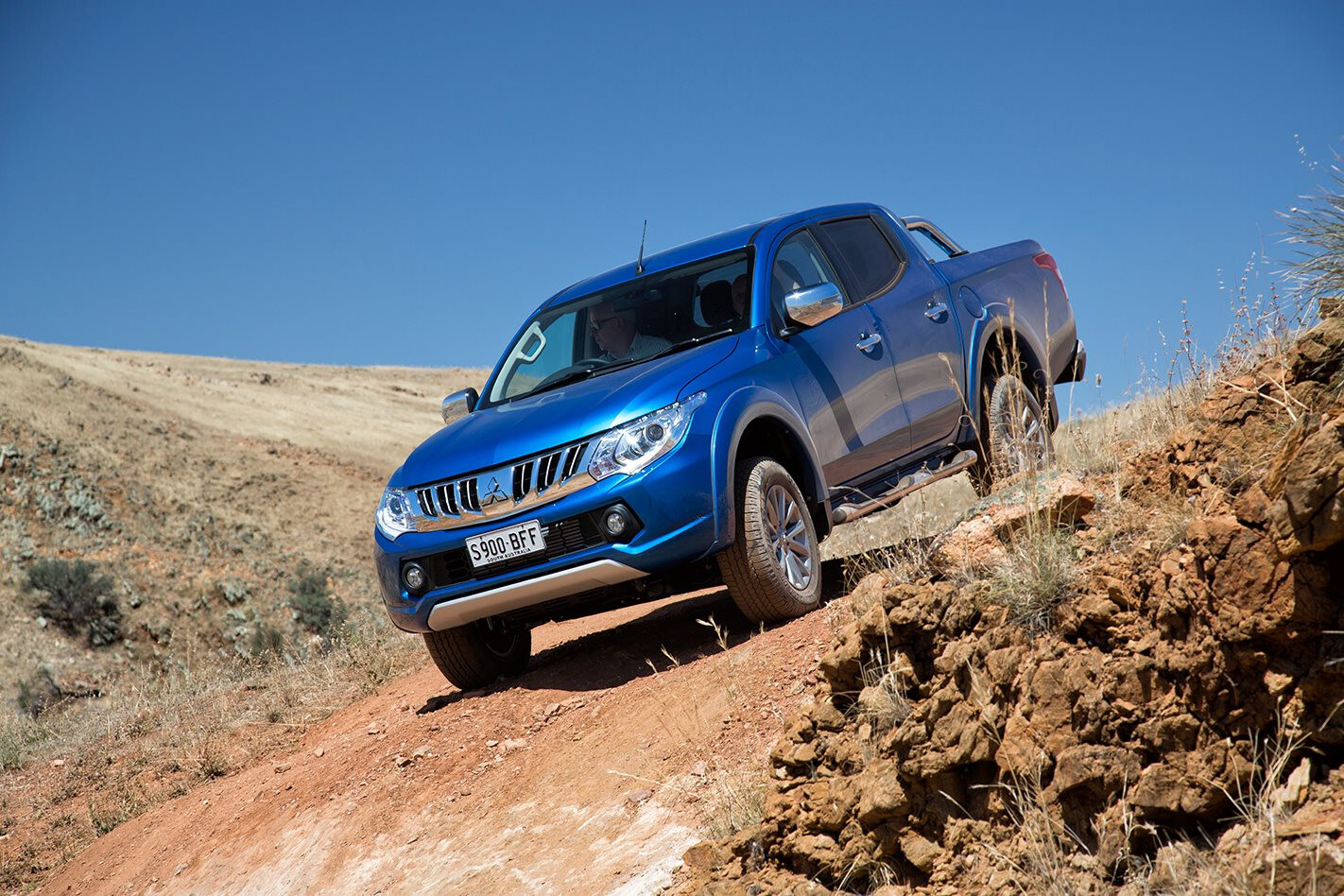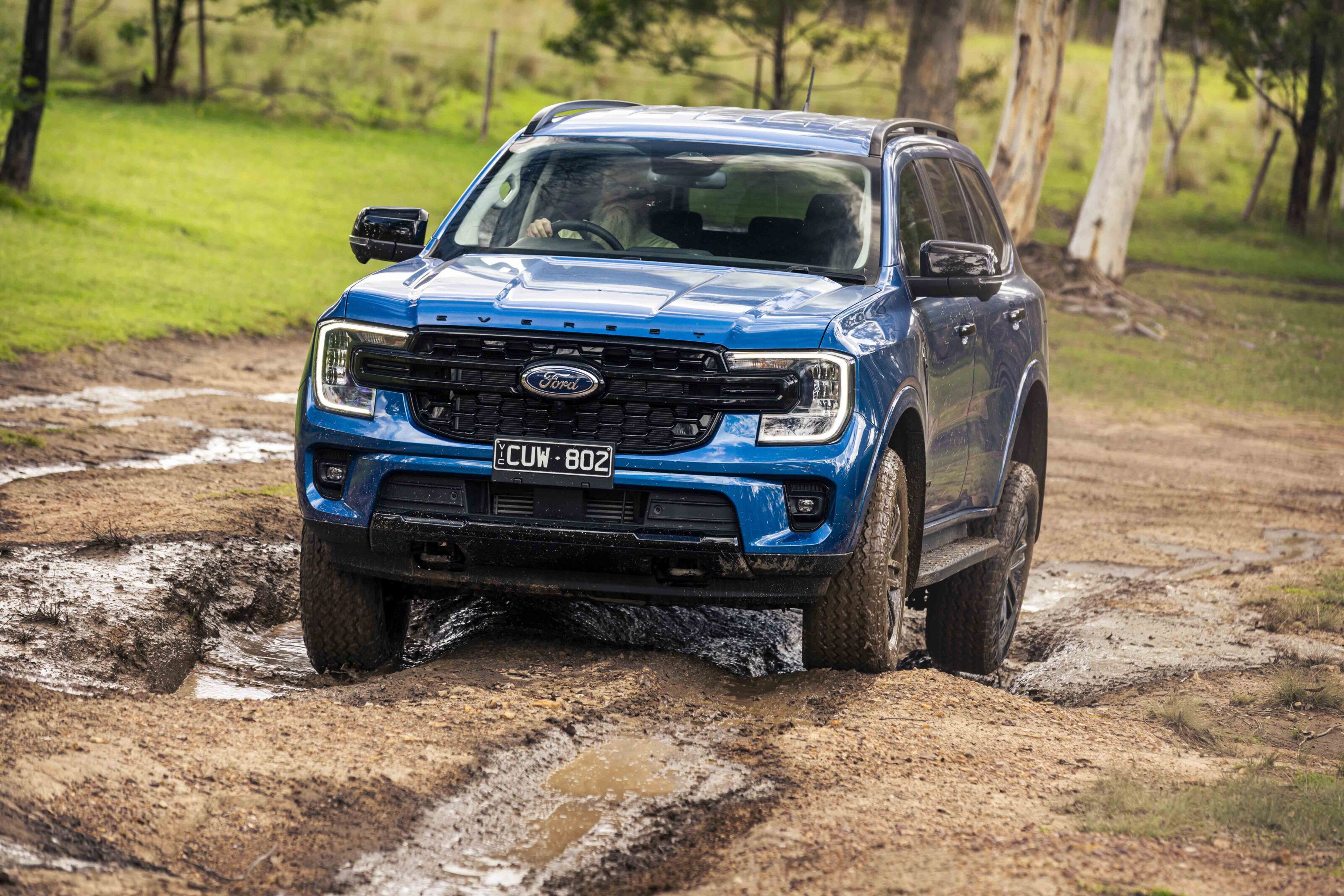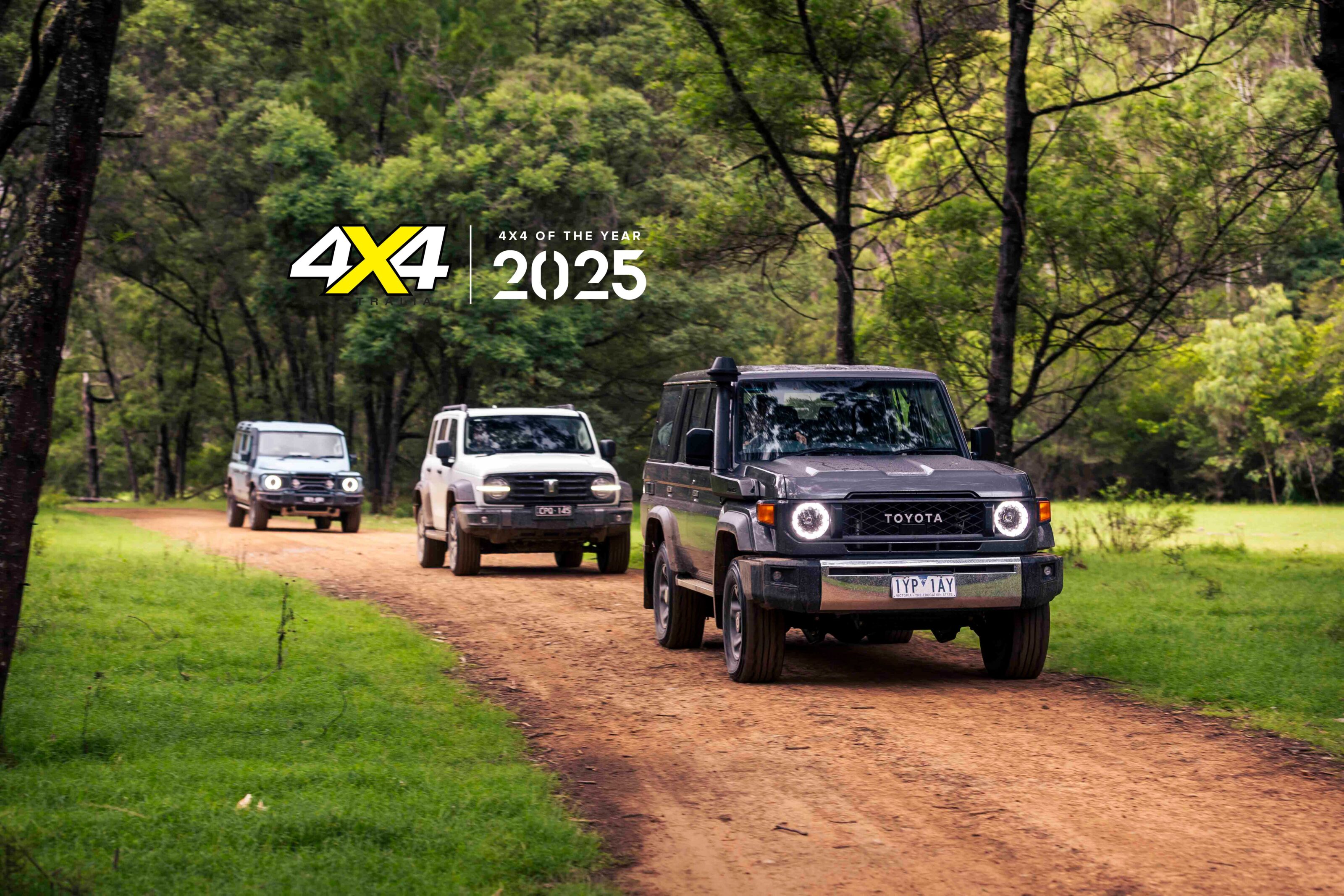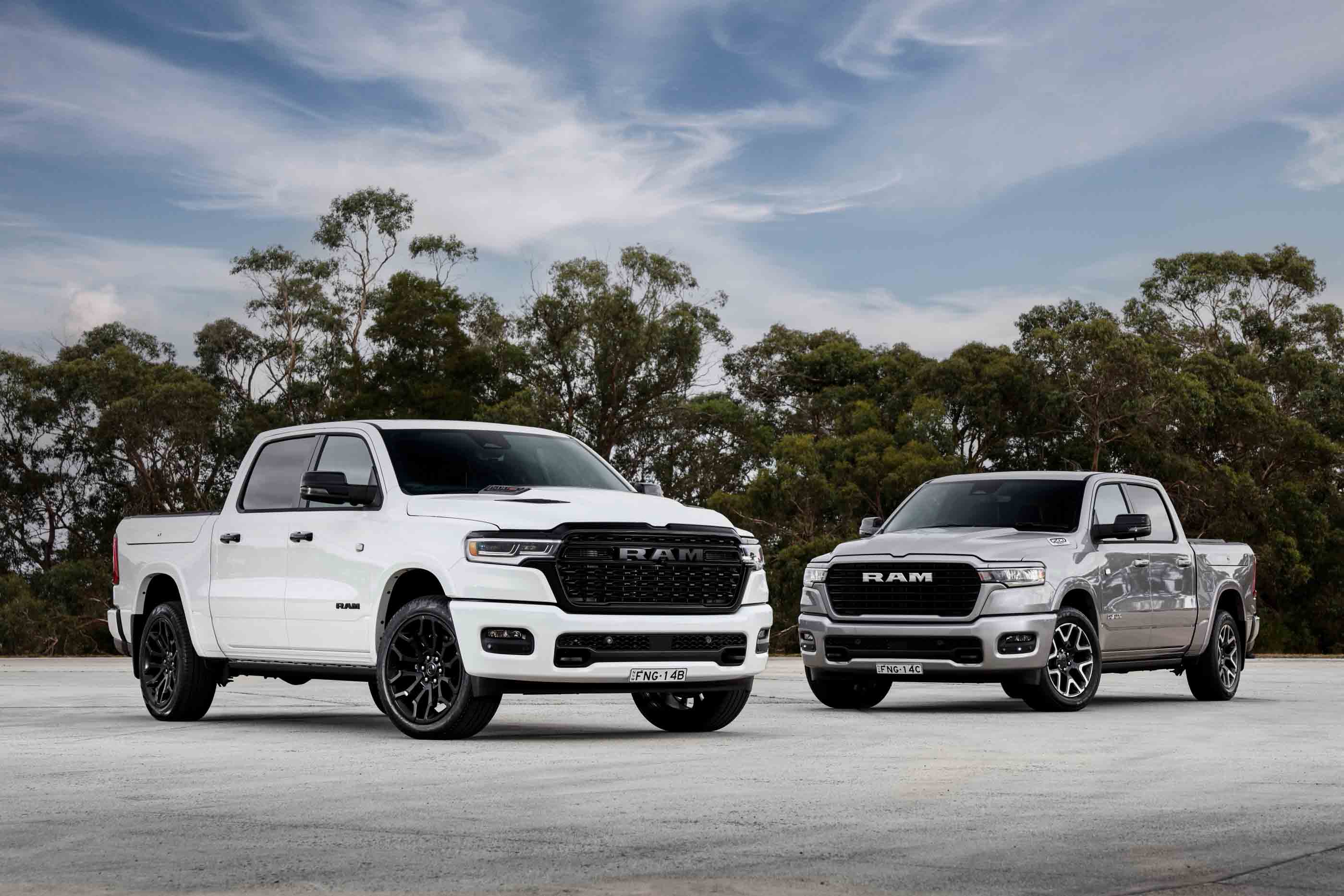Mitsubishi’s long awaited new Triton has finally arrived. Here we are driving the new top-spec Exceed, a model name previously reserved for the Pajero. The venue is the Eagle View 4WD Track in South Australia, also know as the Sanders Gorge Sanctuary. It’s about an hour and a half east of Adelaide near Mitsubishi’s Australian home. This is tough 4×4 country.
We have driven out from Adelaide city, via the Adelaide Hills. The drive route has everything you want to test a new vehicle. First was the cut and thrust of peak-hour city traffic followed by the more relaxed outer-urban environs. From there it’s into the sinuous hills roads that driving enthusiasts enjoy.
Topping it off is the off-road section at Eagle View, which given the nature of the difficult tracks is a solid test, especially for a showroom spec vehicle on stock tyres.
After the off-road section we head into town, first back through the Hills but on some different roads, then the outer urban sprawl before being trapped in the late-arvo city rush…
This is the new fifth-generation Triton, the MQ. It replaces the MN Triton that went on sale in 2009, itself a development of the ML of 2006. MN and ML share the same body and chassis but the ML bought a new 2.5-litre diesel replacing the 3.2-litre diesel used previously.
The core change with the MQ is also a new engine. Like the change from ML to MQ this new engine is smaller, now down to 2.4 litres, but it claims more power and torque than the outgoing 2.5.
The MQ also brings a new and incrementally bigger body, a new six-speed manual gearbox, a revised five-speed automatic and chassis changes. But what Mitsubishi hasn’t tried to do is challenge Ford, Holden, Mazda, Volkswagen and Isuzu in building a bigger ute, as the MQ shares the same basic and smaller proportions of its predecessors, the MN and ML. This is evolution, not revolution.
The first thing you notice about the new Triton is a vast improvement in interior quality and fit and finish. This top-spec Exceed model has a new-found feel of luxury, much better seats and a steering wheel that adjusts for both tilt and reach, instead of just the tilt adjustment of the previous model. From any perspective it’s a much more comfortable vehicle to drive than before.
The new engine features variable valve timing (MIVEC in Mitsubishi speak), new-generation high-pressure (29,000psi) common-rail injection, all-aluminium construction, a balancer shaft and a variable geometry turbocharger. Peak power is only up by a claimed 2kW (to 133kW from 131kW) but is produced at lower revs (3500 vs. 4000rpm).
More significant is the fact that the maximum torque is now 430Nm whereas the previous 2.5-litre engine claimed 400Nm when mated to the old five-speed manual and 350Nm when mated to either the old four-speed auto or the five-speed auto that was only available in the previous top-spec model, the GLX-R. A revised version of the five-speed automatic is now the only auto offered and the new engine is rated at 430Nm regardless of what gearbox is used.
On the road you notice three things about this new engine. It’s much quieter and more refined that before, it’s more willing to rev and it generally feels more muscular and responsive to the throttle. Mitsubishi also claims a 20 percent improvement in fuel economy with a new government test figure of 7.6 litres/100km.
The revised five-speed auto is also sharper than before but it’s still short of the better automatics available elsewhere as it’s not always as quick to shift as it could be. The shifts could be smoother too. Unfortunately the new six-speed manual was not available to test.
Mitsubishi has also revised the steering, the front suspension and lengthened the rear leaf springs. Longer leaf springs can offer more compliance than shorter springs without compromising load-carrying ability. The end result is sharper steering and a better ride. The road noise is also better suppressed thanks to new body mounts.
The two top-spec models will be offered with Mitsubishi’s Super-Select 4×4 system, whereas this was only available on the top-spec model previously. Super Select is effectively a full-time 4×4 system where the driver also has the option of selecting rear-wheel drive. In the full-time mode the drive is now 40:60 front to rear instead of 50:50 and the 4×4 system now has a rotary dial rather than a conventional shifter.
Off road the Triton benefits from a deeper low-range reduction and a rear diff lock that is either standard or optional depending on the model. Engaging the rear locker however still cancels the electronic traction control on both axles, as was the previously the case.
Regardless, the Triton remains a handy vehicle off-road and has the advantage over bigger utes with its tighter turning circle and better manoeuvrability.
The new Triton hasn’t been ANCAP tested but Mitsubishi is aiming at the top five-star rating, which is should achieve. All new dual cabs have seven airbags and trailer-sway control has been added to the suite of chassis electronic control features.
Full details of the new Triton range weren’t available at the time of writing but indications are that the model line-up will mirror the current ML and start with a petrol-powered 4×2 single-cab and extend through to diesel 4×4 dual cabs.
The new Triton enters a an ultra competitive ute market and will face fresh competition from an all-new Nissan Navara and Toyota Hilux before year’s end. Where Mitsubishi goes on pricing will no doubt be the make or break of this new model.
Triton History
Mitsubishi released its first Triton in 1978, initially in 4×2 only and with a 1.6-litre petrol four. A 2.0-litre 4×4 model soon followed. Since that time the Triton has undergone generational changes in 1987, 1996 and 2005 for the 2006 model year. All up some 4-million Tritons in 150 different countries have been sold over the years with names including L200, Cyclone, Strada, Colt, Mighty Max, Storm, Warrior, Magnam, Sportero, and Hunter, depending on the country of delivery. The Triton has also been rebadged as the Chrysler D-50 (very early on in Australia) and as the Dodge D-50, Dodge Ram and Plymouth Arrow in other markets.
Specifications
MY16 Mitsubishi Triton Exceed (auto)
| Engine | DOHC 16-valve 4-cyl turbo diesel |
| Capacity | 2.4-litre |
| Power | 133kW @ 3500rpm |
| Torqueu00a0 | 430Nm @ 2500rpm |
| Gearboxu00a0 | 5-speed auto |
| 4X4 System | dual-range full-time/selectable 2wd |
| Construction | separate chassis |
| Front suspension | independent/coil springs |
| Rear suspensionu00a0 | live axle/leaf springs |
| Wheel/tyre spec | 245/65R17 111S |
| Weight | 1965kg |
| GVMu00a0 | 2900kg |
| Towing Capacityu00a0 | 3100kg |
| ADR fuel consumption* | 7.6 litres/100km |
*Australian Design Rule ‘Combined Cycle’.
Get the latest info on all things 4X4 Australia by signing up to our newsletter.





